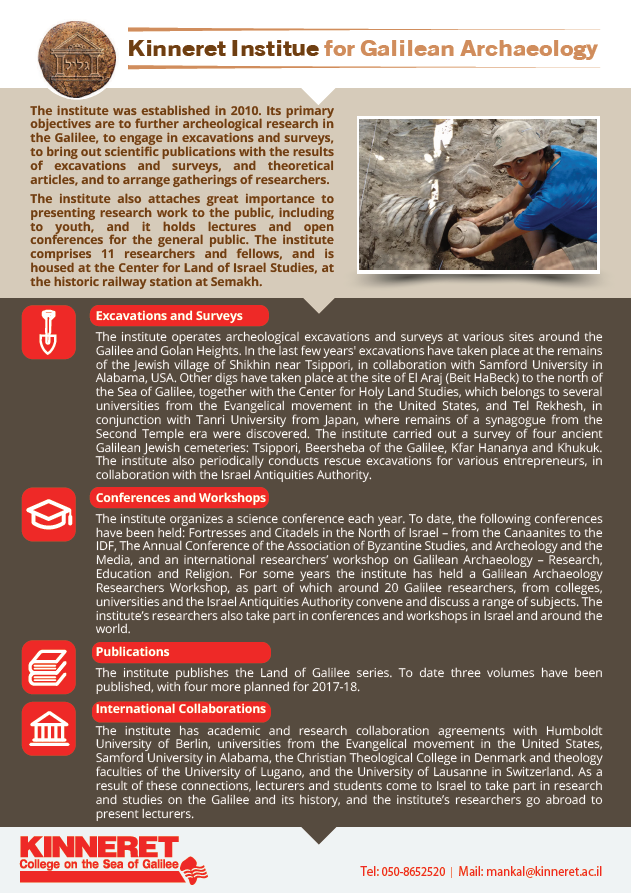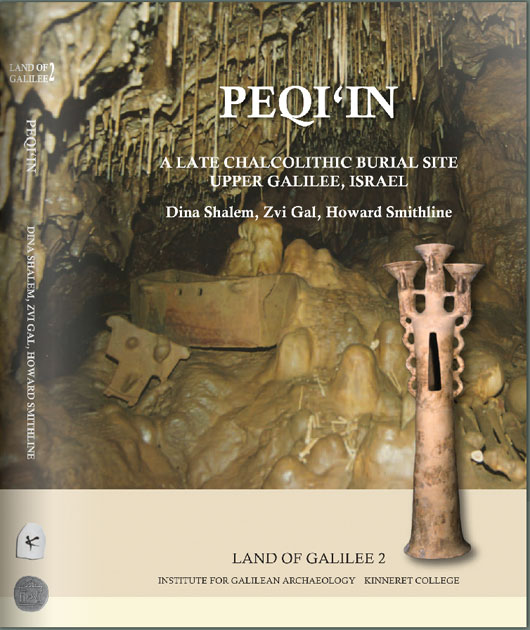Aharoni Amitai, Kinneret Institute for Galilean Archaeology, Kinneret Academic College
Jodi Magnes’ preliminary publication of some of the scenes in the mosaic floor from the synagogue of Hoquq , is highly appreciated as it is a very important contribution to the understanding of cultural and artistic life of Jews in the Roman-Byzantine period.
In my comment here I would like to illuminate and discuss mainly the three published scenes which contain two depictions from the large biblical stories cycle of Samson. The first was published already on February 2013 in which there are two fox’s tails are bound together with a flaming torch in between, and the second, which was uncovered in the summer of 2013 in which Samson is carrying the doors of Gaza on his back. In the third is the hero in front of an enemy horseman in the battlefield.
A year ago, a semi-popular article in “HaAretz” newspaper was published by E. Reiner and D. Amit, and lately they both published another article discussing the same suggestion concerning the appearance of the stories of Samson in both neighboring synagogues mosaic floor: Hoquq which was excavated by Magness and Wadi Hamam which was excavated by Leibner. U. Leibner identified the gigantic figure appeared in the mosaic floor as Samson killing the Philistines.
Reiner and Amit tried to connect between Samson and Helios/Sol in his chariot which appears in some synagogues mosaic floors, and suggested that it reflects a local, rural cult in which the sun was worshiped in the Galilean villages around Tiberias. They also tried to combine it with the figure of Joshua Bin Nun who had a special control powers over the sun, and of whom his burial place was Timnat Serah/Heres which was identified by local people at the Arbel Valley.
This view is rather revolutionary. In the study of Jewish mosaic art it is very common, since the publications of M. Avi Yonah and E. Urbakh, that the scene of Helios is decorative or symbolic and has no meaning of worshiping in the synagogue.
It was also suggested and common that the biblical scenes in the synagogues, whether on walls, as in Dura Europos, or mosaic floors, reflect stories of strength, saving and redemption. They expressed the Jewish belief that the salvation from the foreign powers and the erection of the third Temple in Jerusalem, will come by God’s hand and strength, and indeed, the hand of God appears in the mosaic floor at Bet Alfa, the wall painting at Dura, and in the burial chapel at El-Bagwat in the Western Desert in Egypt (and of course it is the same in the biblical narratives).
In 2012 S. Fogel wrote that Samson was excepted as another figure of the Messiah and in 2013 it was M. Grey who also discussed Samson as a Messiah.He asks the question why the figures of Abraham, Moses or David are missing from the mosaics which were discovered in Eastern Galilee, if the massage behind these mosaic floors is salvation and hope. They both agreed that Samson is a Messianic figure.
Bellow, I would like to give another interpretation for the appearance of Samson stories cycle on two mosaic floors of Eastern Lower Galilee synagogues.
My view is that these stories reflect the common notion of the Eastern Lower Galilee villagers that they are the descendants of the Dan tribe of which his traditional hero is Samaon.
It was Y. Yadin who already suggested that the tribe of Dan was one of the “Sea People” which had a special affinity to Samson. Yadin tried to show the possible connections with Dan and the Danaoi in the Egyptian sources and the Dannanu from the inscription of Azitoad in Kartape, Cilicia, and the people of the Adana Valley on the Cilician shore.
The German archaeologist Budde, while excavating in Mophsohestia of Cilicia, not far from Adana, uncovered a basilical building which is facing east, paved with a glorious mosaic floor in which some sections of Samson’s scenes preserved. Avi Yonah supported the identification of this building as a synagogue, and if he is right, there are three sites with depiction of Samson’s stories, connected to ancient Dan.
Already Ishtori Haparchi mentioned that the tomb of Dan, son of Jacob (See photo), is east of Mount Tabor (near modern Kibbutz Gazit). There was a small Arab village by the name of Dana which was identified as the Talmudic village Kfar Dan. Architectural fragment from an ancient synagogue were found at the site including a lintel with a menorah. It strengthening the hypothesis that there were strong traditions in Eastern Lower Galilee, connected to the tribe of Dan.
Further support to my hypothesis I find in the appearance of a horseman in both mosaic floors, in connection to the acts of Samson. I believe that this figure hints to the biblical verses in Genesis 49: 16-19: “Dan shall judge his people, as one of the tribes of Israel. Dan shall be a serpent by the way, an adder in the path, that biteth the horse heels, so that his rider shall fall backward. I have waited for thy salvation, O LORD. Jacob’s blessing to Dan can be read as an expectation that redemption will come to Israel from Dan, and surly it will be led by their hero – Samson.
I think that there is a way to support the claim of ancient tribal traditions in comparing it with Middle East tribal, Bedouins traditions. Although there are Bedouins who are already living for two or three generations in towns and cities, they are still carrying with them all their tribal traditions and stories as well as names. The same is in many tribes in Africa.
We probably have to wait for the next seasons at Hoquq. We are allowed to believe that there will be more “Samsonic” scenes of un-natural actions, such as the annunciation to Samson’s mother, Samson slashing the lion, Samson killing the Philistines with the donkey jaw bone, and finally, Samson between the pillars of the Dagon temple in Gaza, and then we will be more assure in the suggested theory.

The author near the traditional tomb of Dan


 Dr. Mordehai (Motti) Aviam
Dr. Mordehai (Motti) Aviam Dr. Jacob Ashkenazi
Dr. Jacob Ashkenazi Prof. Chaim Ben David
Prof. Chaim Ben David Dr. Dina Shalem
Dr. Dina Shalem Amitai Aharoni
Amitai Aharoni
